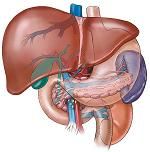Public Health Watch: Enhanced Monitoring for Hepatitis B Among Liver Transplant Patients May Be Needed
CDC report chronicles 20 incidents of HBV infection among recipients between 2014 and 2019.

Between 2014 and 2019, the US Centers for Disease Control and Prevention (CDC) received 20 reports of hepatitis B virus (HBV) infection among recipients following liver transplantation.
That figure, in and of itself, is significant given that approximately 8,000 such procedures are performed annually across the country—and that, at least historically, HBV affected up to 10% of the recipients of donor livers. Improved monitoring of organ donors for risk factors (such as history of injection drug use) and the advent of low-dose hepatitis B immune globulin (HBIG) has brought that number down significantly.
However, ideally it would be zero, particularly given the serious health complications associated with HBV, including hepatocellular carcinoma, cirrhosis, and liver cancer.
Hence, the authors of a new report released July 9 by the CDC are encouraging more aggressive HBV testing protocols in transplant patients post-procedure, with standard screening performed 4 to 6 weeks following surgery augmented with a subsequent screening 1 year later or even sooner “if signs and symptoms of viral hepatitis develop,” even if prior tests were negative.
“Early detection of donor-derived HBV infection is important for preventing hepatitis B-related complications among organ recipients and unintended transmission to their contacts,” wrote the researchers, who did not reply to request for comment. “Recipients should be offered hepatitis B vaccination and hepatitis B testing before transplantation [as well]. More broadly, providers caring for recipients of organs from donors who recently injected drugs or are hepatitis C virus-seropositive should maintain awareness of infectious complications of drug use and monitor recipients accordingly.”
Notably, of the 20 reports of HBV infection among transplant recipients—all of whom received organs from donors who had no evidence of past or current HBV infection—14 were detected in 2019 alone. Among all cases, infections were detected a median of 38 weeks following transplantation (range 5 to 116 weeks). Of the 14 donors, 13 were hepatitis C virus (HCV)–seropositive and had a history of injection drug use within the year preceding their death, a positive toxicology result, or both.
For the 20 donors in these cases, median age at death was 31 years and 11 were male and 19 were White. The most common cause of death was drug intoxication and injection drug use and positive toxicology were each reported for 18 donors. Overall, 16 donors, including 13 of the 14 reported in 2019, were HCV antibody-seropositive. Among these 13 donors, 12 had positive drug toxicology, 12 had a history of injection drug use, and 11 had both, with stimulants (cocaine or amphetamines) the most common substances identified on toxicology screening.
HBV DNA was detected in 1 archived donor serum sample and 1 archived liver biopsy specimen, according to the researchers, and new HBV infection was identified in 18 liver and 2 liver/kidney recipients at a median of 41 weeks following transplantation. None of 31 recipients of nonliver organs from the 20 donors developed a new HBV infection.
Because injection drug use is a commonly risk factor for HBV infection, providers caring for recipients of organs from donors who recently injected drugs should “maintain awareness of infectious complications of injection drug use and monitor [organ] recipients accordingly,” the CDC-led research team said.
“Donors might have been exposed to HBV through injection drug use shortly before death; thus, organ procurement might have occurred during the eclipse period, before HBV DNA was detectable in donor serum,” they wrote. “During the eclipse period, HBV enters the hepatocyte nucleus and forms covalently closed circular DNA, which endures throughout the life of the nondividing hepatocyte. Therefore, liver recipients should be more likely than nonliver organ recipients to experience HBV infection from donors with eclipse period infection.”
